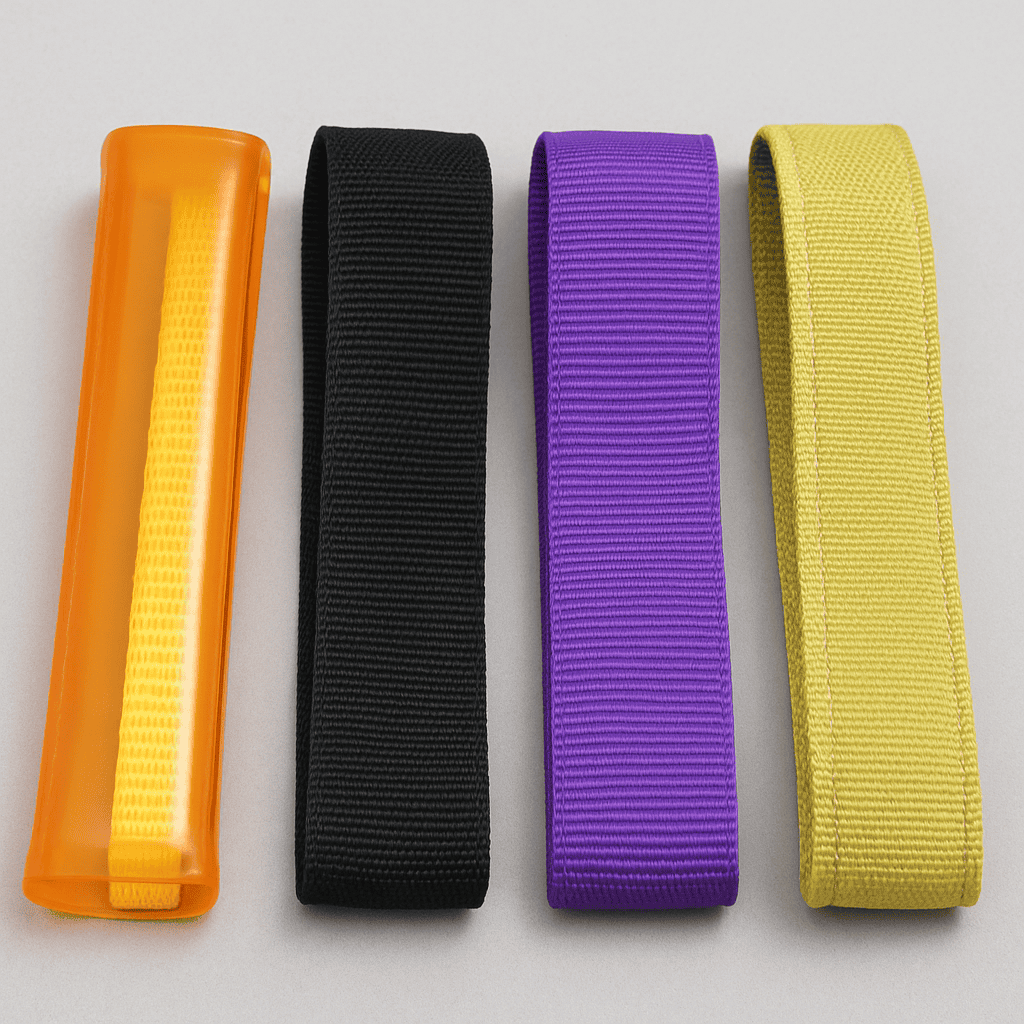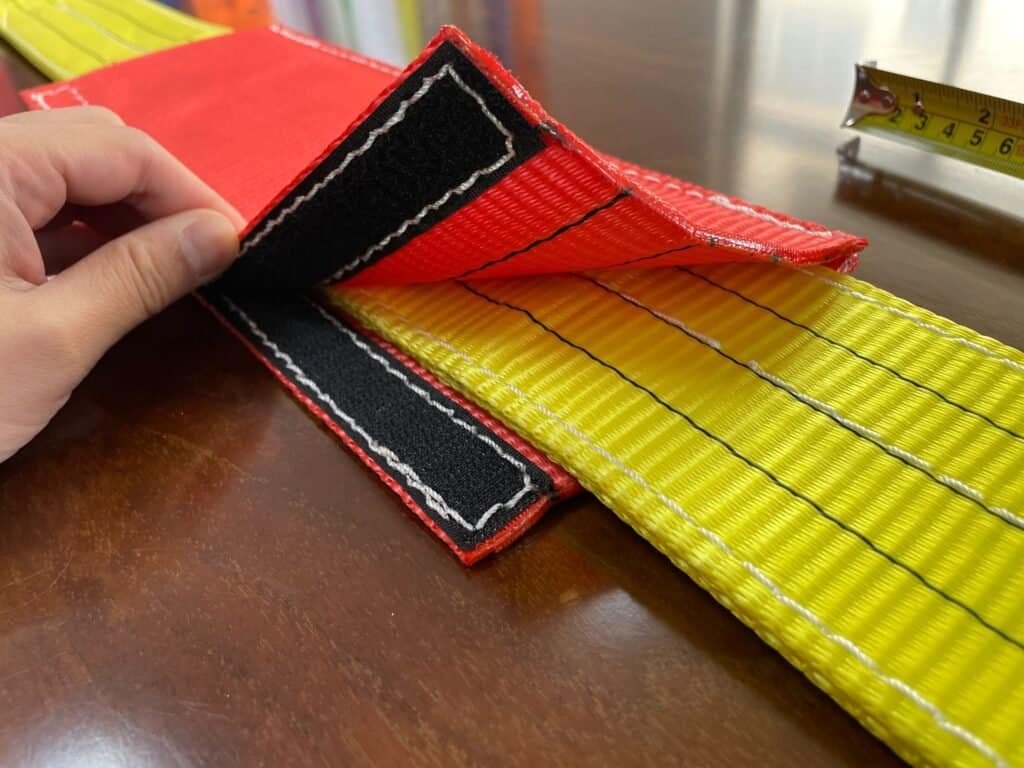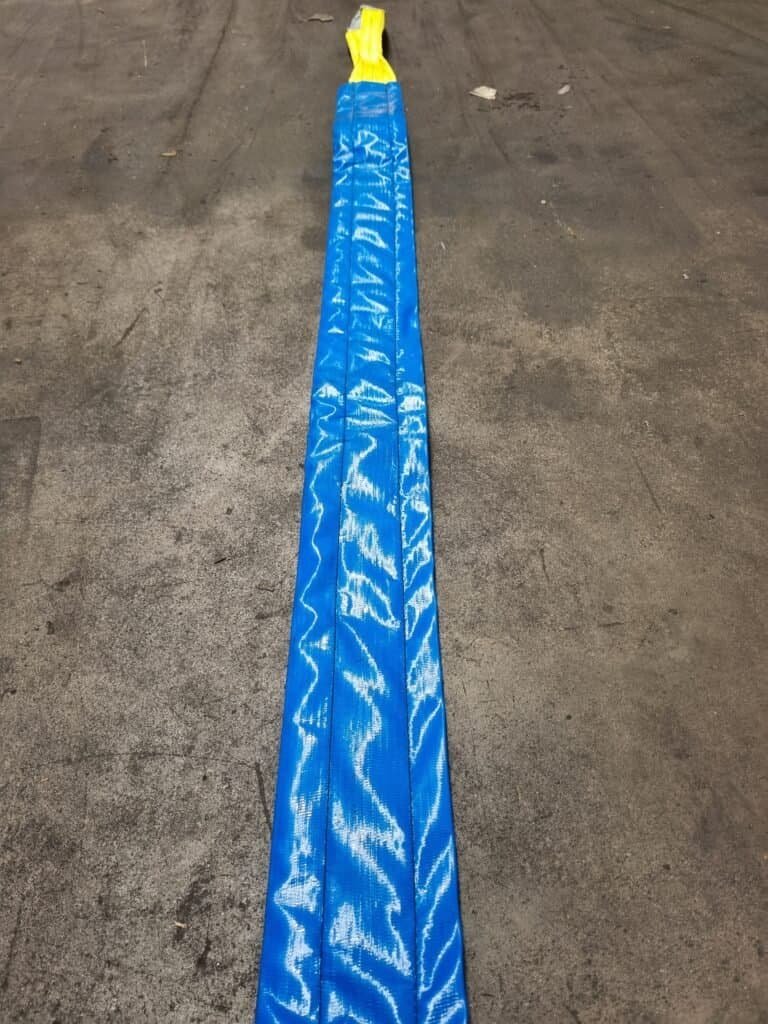Lifting slings—whether webbing sling or round sling—are the backbone of any heavy lifting operation. But even the toughest slings have a weakness: sharp edges, abrasive surfaces, and constant wear. That’s where sling protector sleeves come in.
What Are Sling Protector Sleeves?

A sling protector sleeve is an additional cover that wraps around a lifting sling to provide enhanced protection against damage. Made from materials like polyurethane (PU), nylon, polyester, or even cut-resistant Kevlar, they act like armor for your slings.
They come in different styles:
- Sewn-on sleeves (permanently attached)
- Removable sleeves (slip-on tubes for flexible use)
- Heavy-duty cut-proof sleeves (for razor-sharp edges)
Why Use a Sling Protector?

- Stop Abrasion Before It Ruins Your Slings
Every time a sling rubs against a rough surface—concrete, metal, or machinery—it weakens. A protector sleeve takes the beating instead, saving the sling underneath. - Block Deadly Cuts from Sharp Edges
Steel plates, machinery parts, and construction materials often have knife-like edges. One wrong move, and an unprotected sling can snap. A cut-resistant sleeve prevents that disaster. - Make Your Slings Last Longer
Replacing worn-out slings gets expensive. A sleeve can add years to a sling’s life, saving you money in the long run. - Safety First—No Compromises
Damaged slings are a major safety hazard. Using protector sleeves minimizes the risk of sling failure, helping you maintain compliance with lifting safety standards and protecting your crew.
When Should You Use a Sling Protector?

Lifting steel coils, beams, or metal plates
Handling concrete pipes, rough castings, or machinery
Repetitive lifts in construction, manufacturing, or rigging
Anywhere safety regulations demand extra protection
How to Choose the Right Sleeve?

Here’s a quick guide to help you pick the right sleeve for your lifting application:
| Material | Features | Best For |
|---|---|---|
| Polyurethane (PU) | High abrasion and cut resistance, semi-rigid | Steel plates, sharp-edged metal |
| Nylon | Flexible, moderate abrasion resistance | General-purpose lifting |
| Polyester | Budget-friendly, good for light-duty use | Non-abrasive, smooth-surfaced loads |
| Kevlar or other anti-cut fibers | Extreme cut resistance, high strength | High-risk environments |
Tips for Safe and Effective Use
- Cover the right spot – Position the sleeve where the sling touches sharp edges.
- Check for wear – Inspect sleeves regularly and replace if torn.
- Prevent slipping – Ensure removable sleeves stay in place during lifts.
- Match the size – A loose sleeve won’t help; a tight one restricts movement.
Conclusion
Sling protector sleeves may seem like a small accessory, but they make a big difference in both safety and efficiency. Whether you’re lifting heavy machinery, steel components, or irregularly shaped loads, a well-chosen sleeve helps prevent costly damage and dangerous failures. If your operation involves frequent lifting, consider protective sleeves not as an option, but as a standard part of your lifting gear.
Need help picking the best sleeve for your job? Contact us for expert advice or custom solutions.
www.chinatoplifting.com
tracy@chinatoplifting.com
评论
发表评论